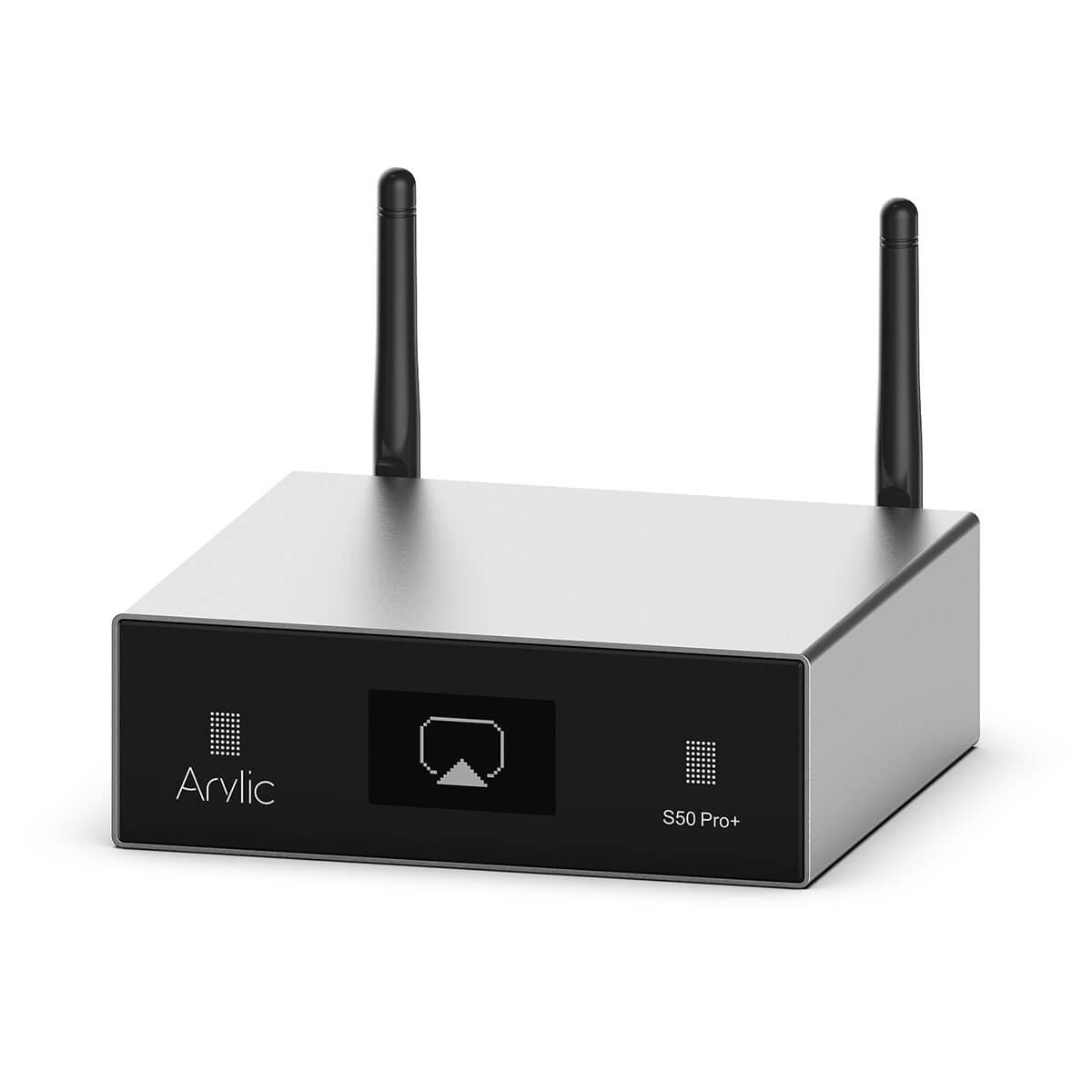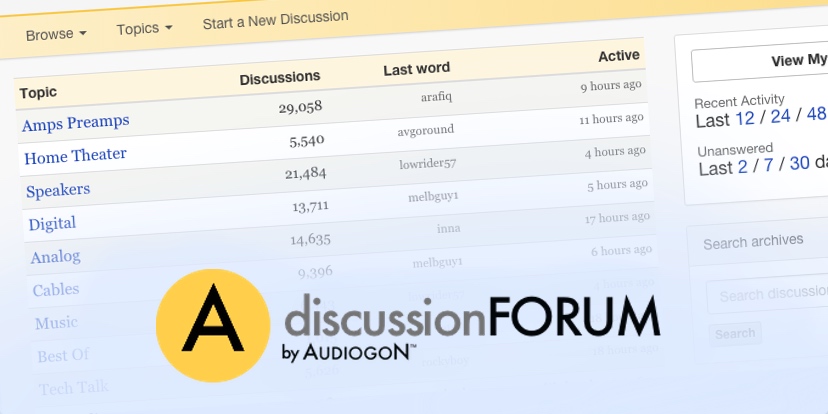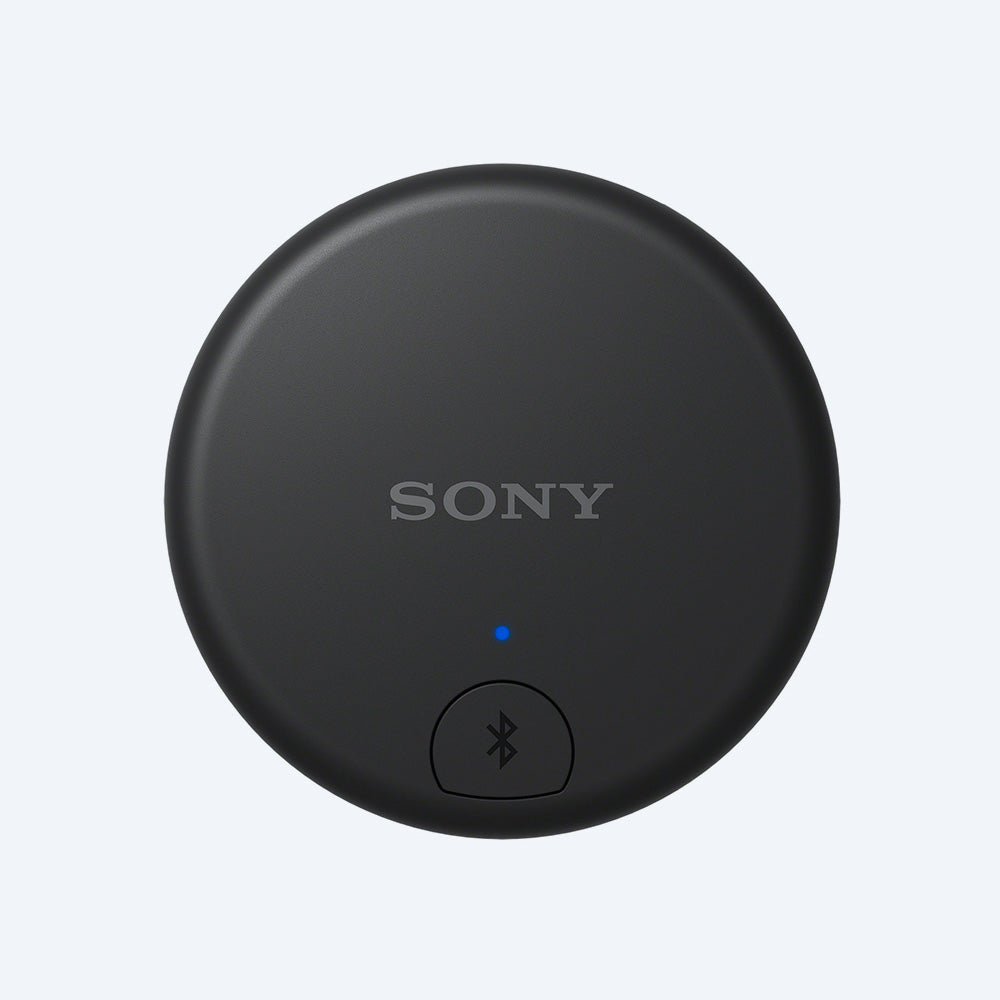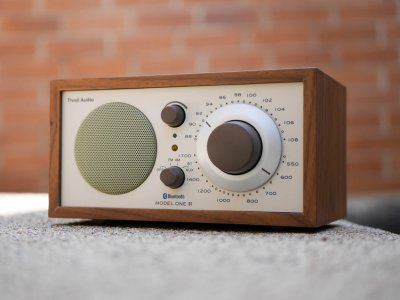This has optical in and so @sachinchavan 15865 should be able to connect his CD player output to this and stream it to the mcintosh
S50 Pro+ Wireless Stereo Preamp With aptX HD & ESS 9023 DAC
Unbelievable price with a wireless stereo preamp integrated with WiFi, aptX HD, Airplay, Multi-room features, and ESS Sabre DAC, AKM ADC. Free Shipping from US/EU/RU warehouse.www.arylic.com
And this into the fray
You are using an out of date browser. It may not display this or other websites correctly.
You should upgrade or use an alternative browser.
You should upgrade or use an alternative browser.
Suggestions for connecting CD transport to wifi speaker
- Thread starter sachinchavan 15865
- Start date
Subbu68
Well-Known Member
I had been thinking over Arylic S50 or even their DIY kits before jumping into Tinker board and Khadas Tone Board Combo. It could take my NAS (over LAN probably), Tape deck and CDP.This has optical in and so @sachinchavan 15865 should be able to connect his CD player output to this and stream it to the mcintosh
Then, had to pack the preamp I already have and dropped this idea.
Subbu68
Well-Known Member
sachinchavan 15865
Well-Known Member
Thanks @mbhangui and @Subbu68, but with a DAC and preamp, and at that price, isn’t it an overkill for the purpose? Also I am not sure how this would work? Can it just take digital signal from my CD transport via optical and transmit the same to the all in one (AIO) speaker (it’s not just an active speaker, but has its own DAC and streamer that I’d like to use) via aptX and Wi-Fi? Wouldn’t I then needlessly paying for the DAC and pre in it?This has optical in and so @sachinchavan 15865 should be able to connect his CD player output to this and stream it to the mcintosh
Last edited:
Subbu68
Well-Known Member
With my limited knowledge, any streamer send the "music" in digital format (Wifi or BT) and the inbuilt "receiver" of the speaker would take it, decode it and convert to analog for the amp to amplify it with it's in-built DAC. So the DAC inside the speaker is a must.Thanks @mbhangui and @Subbu68, but with a DAC and preamp, and at that price, isn’t it an overkill for the purpose? Also I am not sure how this would work? Can it just take digital signal from my CD transport via optical and transmit the same to the all in one (AIO) speaker (it’s not just an active speaker, but has its own DAC and streamer that I’d like to use) via aptX and Wi-Fi? Wouldn’t I NEN needlessly paying for the DAC and pre in it?
Manavendra ( @mbhangui ) am i correct with the above statement?
With the Arylic you can connect to an amp if you wish to apart from streaming to the speaker. In the thread I posted above a FM with Arylic has described how he is doing.
sachinchavan 15865
Well-Known Member
@subbu567, I’ve explained my use case in the first post in the thread. The AIO speaker I intended to connect to my CD transport has its own DAC and amp that I intend to use, and not bypass (which isn’t possible either). Now, if I do that won‘t the DAC and Pre on this Arylic be superfluous?With my limited knowledge, any streamer send the "music" in digital format (Wifi or BT) and the inbuilt "receiver" of the speaker would take it, decode it and convert to analog for the amp to amplify it with it's in-built DAC. So the DAC inside the speaker is a must.
Manavendra ( @mbhangui ) am i correct with the above statement?
With the Arylic you can connect to an amp if you wish to apart from streaming to the speaker. In the thread I posted above a FM with Arylic has described how he is doing.
On the other hand, I prefer the BT transmitter option proposed earlier in this thread. There are transmitters with aptX HD transmission (which should be sufficient for CD bit rate) at around Rs 5k. The effect they have on the SQ needs to be seen however.
A Bluetooth transmitter with optical in will be your best bet.. In that case your AIO speaker will do the da conversion.
A quick google search resulted this, better options must be there too.
A quick google search resulted this, better options must be there too.
By asking this question you made me think. If you send it over bluetooth, data will not be converted from digital to analog by the streamer's dac. The SPDIF interface from the CD to the streamer will transfer data in the digital domain and then sent over bluetooth in digital domain by the streamer. The transport's dac isn't being used at all. In fact a CD transport without analog out doesn't have a DAC. It will be the clock of the CD transport that will be used but almost all DACs now will reclock that signal.With my limited knowledge, any streamer send the "music" in digital format (Wifi or BT) and the inbuilt "receiver" of the speaker would take it, decode it and convert to analog for the amp to amplify it with it's in-built DAC. So the DAC inside the speaker is a must.
Manavendra ( @mbhangui ) am i correct with the above statement?
As the signal remains digital and turns analogue at the very last minute and with a minimum of extra cables and connections, the signal will suffer less from analogue signal deterioration. This way the sound you’re hearing is much closer to the original recording. Some CD players do also have digital outputs so they can be used as a transport too.CD transports differ as they don’t have any analogue or digital to analogue components in them or any filters to improve the analogue sound. Instead they pass on the digital audio signal straight on to a DAC or an amplifier with a DAC via digital outputs like coaxial or optical outputs. In the OP's case it will always be the mcintosh who will call the shots.
The sound quality will be dependendent on the clock of the CD transport, but over long distance (if the OP uses mismatched cables), it will be prone to jitter and more so if the optical output of the transport is used. See answer no 23 in https://electronics.stackexchange.c...l-from-a-low-cost-cd-player-be-from-that-of-a
Yes. The Arylic also has usb input and so it can be connected to a laptop and the output streamed to mcintosh. Howerver the cost after duty and shipping will have this device costing 40K and above. Would I buy it. Absolute no. I would rather buy a small factor intel/amd computer, put linux on it, have a sound card with SPDIF in and make that a hub for all my old audio devices/players connect to the sound card to be able to stream to something like mcintosh. A device like Raspberry PI will also not do as they have limited options for sound cards that have digital input. A linux box will last for ever, you don't have to worry about updates. Arylic being a commercial thingy, will have support end after few years and the device will become usless in 4 years. In contrast my HTPC from 2006 or so is still upto date and always able to do things that were invented after 2006 after 17 years.With the Arylic you can connect to an amp if you wish to apart from streaming to the speaker. In the thread I posted above a FM with Arylic has described how he is doing.
NOTE: The only thing I'm not sure about is of the cable that will be used to connect the CD transport to a device like this. I have read that internal reflections are a thing in SPDIF cable and the impendance has to be 75 ohms or so. But I haven't been able to verify this practically at home. See this https://forum.audiogon.com/discussions/question-about-length-of-spdif-coax-interface-cable-length.
IIRC @keith_correa wrote something about this long back. I will try to locate that post EDIT: Located that article. See this answer by jls where he corrected my understanding https://www.hifivision.com/threads/discussion-on-digital-cables.91299/post-1021158
Last edited:
sachinchavan 15865
Well-Known Member
Agree! All I need is the BT transmitter function and not the BT receiver function. And for sure, no DAC and preamp. There are products from Rs 2k onwards on Amazon that do just that. I’d need to check for their SQ impact in deciding.A Bluetooth transmitter with optical in will be your best bet.. In that case your AIO speaker will do the da conversion.
A quick google search resulted this, better options must be there too.
The sound quality will be dependendent on the clock of the CD transport, but over long distance (like in the OP's case), it will be prone to jitter and more so if the optical output of the transport is used.
Manavendra, if you mean physical distance, then I don’t expect the distance between my CD transport and the BT transmitter to be more than half a foot (also the length of my optical cable). Do you think that can introduce significant jitter? Today I use the same optical out to connect to my external DAC/Streamer and it doesn’t seem to be distorted in any way.
All good. I just recalled a post on digital cables and the effect of the cable impedance, etc. I have edited the above post to link that article. Does your CD transport have a SPDIF out on RCA connector? Most say the optical interface is the most jitter prone. As far as I'm concerned I have also never been able to distinguish between the quality of SPDIF optical and SPDIF non-optical connection. They both sound the same to me.Agree! All I need is the BT transmitter function and not the BT receiver function. And for sure, no DAC and preamp. There are products from Rs 2k onwards on Amazon that do just that. I’d need to check for their SQ impact in deciding.
Manavendra, if you mean physical distance, then I don’t expect the distance between my CD transport and the BT transmitter to be more than half a foot (also the length of my optical cable). Do you think that can introduce significant jitter? Today I use the same optical out to connect to my external DAC/Streamer and it doesn’t seem to be distorted in any way.
sachinchavan 15865
Well-Known Member
I don’t quite understand the question. Do you mean to ask if I have a combined Optical and Aux port? In that case the answer is no. My CD transport has a dedicated optical and another dedicated coaxial digital out port.Does your CD transport have a SPDIF out on RCA connector?
Wouldn’t it also depends on the cable one uses? I never liked the sound from the optical port till I went for the Lifatec Silflex optical cable. I prefer its output even over that of the coaxial (Nordost Silvershadow)As far as I'm concerned I have also never been able to distinguish between the quality of SPDIF optical and SPDIF non-optical connection.
I don’t quite understand the question. Do you mean to ask if I have a combined Optical and Aux port? In that case the answer is no. My CD transport has a dedicated optical and another dedicated coaxial digital out port.
The dedicated coaxial digital out is also SPDIF, except that the signal is electrical instead of optical. For SPDIF most equipment provide the same signal over toslink and a RCA port. The better ones provide the electrical SPDIF on a BNC port. The electrical one is mostly better than the optical when it is referring to output. As an input, few dacs like the EC Designs dac, the optical input is better. The Coax is about 7 times better than the Toslink in jitter performance. But the values are very low, makes one wonder if the difference will be audible.
The problem with TosLink is that it is S/PDIF, which inherently adds jitter. The faster the rise time of the data link, the less jitter gets added. TosLink is pretty slow and the rise times are slow enough that it can barely handle the data rates for S/PDIF. So there is more jitter added than with a coaxial cable.
Also another thing to remember is that the optical signal is not native. The native SPDIF signal is electrical which is converted into light by using a converter. So there is one extra component in the signal path when you use optical
Reference:

Audiogon Discussion Forum
A friend of mine convinced me to purchase an electrical (RCA jack) digital cable for the home theater. He said that even though optical looks neat, it i...
Now, you may ask how audible is this? I switched back and forth while listening to different tracks for three minutes and I could not tell the difference. A longer listening session or more tracks may prove otherwise. But for now, if you are a purist, you know SPDIF transmission doesn’t necessarily equate to lossless transmission.
Are all toslink outputs equal?
This is a question I have had in my head for a while. If you are not familiar, Toslink (optical audio cables) are used to send digital audio signals f...
Last edited:
sachinchavan 15865
Well-Known Member
That’s the general understanding, I agree. As I wrote earlier, I was never happy with the brittle/grungy effect toslink optical cables added to the sound. It’s only with Silflex Lifatec that I was happy. There’s hardly, if any of that harshness. And clarity is even better than the coaxial (of good pedigree - Nordost) that I have. I suppose that’s because the light signal doesn’t get affected by interferences unlike the electric signal in coaxial. You can read more on Lifatec optical cables - there are many happy users and reviews on the net.The electrical one is mostly better than the optical when it is referring to output.
However, since I have both possibilities (optical and coaxial outs) on my CD transport, this doesn’t come in the way of the main purpose of this thread - connecting it to a wireless AIO speaker that has no input ports.
Subbu68
Well-Known Member
@sachinchavan 15865 BTW have you already purchased the speaker? From your earlier posts you are considering it, aren't you?
Had a look at the spec. This is one reason I did not go for SONOS 5 years ago. No way to connect any analog signal nor a digital signal.
KEF LS50 Wireless fits the requirement I believe.
Had a look at the spec. This is one reason I did not go for SONOS 5 years ago. No way to connect any analog signal nor a digital signal.
KEF LS50 Wireless fits the requirement I believe.
sachinchavan 15865
Well-Known Member
@Subbu68, no I haven’t. I am considering it however. I am looking for a compact all-in-one speaker, not a two speaker solution. I received many suggestions on another thread where I was exploring options. This thread is to only explore how to connect the CD transport - the only additional input I envisage.@sachinchavan 15865 BTW have you already purchased the speaker? From your earlier posts you are considering it, aren't you?
Had a look at the spec. This is one reason I did not go for SONOS 5 years ago. No way to connect any analog signal nor a digital signal.
KEF LS50 Wireless fits the requirement I believe.
Subbu68
Well-Known Member
Going Mono when many are trying to add a dozen channels in their setup like the divisions in a compass@Subbu68, no I haven’t. I am considering it however. I am looking for a compact all-in-one speaker, and not a two speaker solution. I received many suggestions on another thread wher I was exploring options.
My only connection add on would be the CD transport, nothing else.
Subbu68
Well-Known Member
@sachinchavan 15865

 sonyworld.ae
sonyworld.ae

Buy Online Sony WLA-NS7 Wireless Transmitter in UAE
Buy Online Sony WLA-NS7 Wireless Transmitter in Dubai, Abu Dhabi, Sharjah, Ras Al Khaimah, Ajman, Umm Al Quwain and Fujairah in United Arab Emirates at best price. Free Delivery.
sachinchavan 15865
Well-Known Member
Sony’s commitment to personal audio is commendable!@sachinchavan 15865

Buy Online Sony WLA-NS7 Wireless Transmitter in UAE
Buy Online Sony WLA-NS7 Wireless Transmitter in Dubai, Abu Dhabi, Sharjah, Ras Al Khaimah, Ajman, Umm Al Quwain and Fujairah in United Arab Emirates at best price. Free Delivery.sonyworld.ae
sachinchavan 15865
Well-Known Member
It can actually sound quite nice. Ever tried sitting next to one of your stereo speakers? You still get the imaging (though not the soundstage) and can be quite engrossing without distraction of sound popping from different angles!Going Mono when many are trying to add a dozen channels in their setup like the divisions in a compass
Subbu68
Well-Known Member
When I sit outside speaker boundaries i have experienced a surreal soundstage like sitting on the extreme edge of a real world concert hall. WIt can actually sound quite nice. Ever tried sitting next to one of your stereo speakers? You still get the imaging (though not the soundstage) and can be quite engrossing without distraction of sound popping from different angles!
With the desktop setup i have (that i started using again extensively only now) I feel my main system could be redundant!!! Why did I spend so much on it?
Had used my Tivoli radio (Model One BT) for desktop audio felt it quite good. Sound was not that "large" though.

But never tried with larger speakers.Maybe should try.
Join WhatsApp Channel to get HiFiMART.com Offers & Deals delivered to your smartphone!
Similar threads
- Replies
- 10
- Views
- 2K
- Replies
- 2
- Views
- 12K
- Replies
- 3
- Views
- 13K

